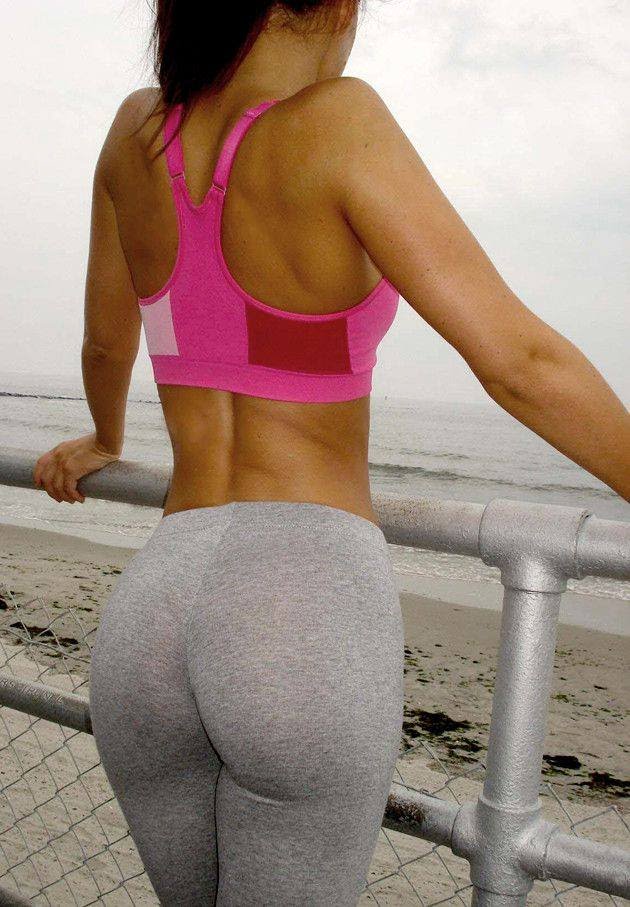Why Planks Are the Best Abdominal Exercise
Abdominal crunches do not flatten your midsection. Knowing this, you've probably just freed up 15 minutes of your workout time. Well, at least 5 minutes. Here's why, and here's what you can do instead.
Crunching activates the well-known, well -loved rectus abdominis muscle, also known as the six-pack (if its definition is visible through the overlying body fat and skin). When you work this muscle to fatigue, nothing happens to the body fat that is layered on top of it. Your body does not take abdominal fat and transform it into more six-pack muscle, nor does it use this fat as fuel for the exercise. Spot reduction is probably the most famous fitness myth, yet we cling to it with great optimism. For some reason, we hope that if we keep trying to spot reduce it may eventually work. It will not, so change your focus. Cut the boring crunches out of your workout and expend your energy elsewhere.
First, spend 5 more minutes on the treadmill, or whatever is your chosen cardiovascular activity. Aerobic exercise elevates and maintains your heart-rate in an effective target zone over a period of time. After about 15 – 20 minutes your body switches from using carbohydrates to fat as fuel, since fat is a better fuel source. Now you are in your fat-burning zone for the rest of your aerobic workout. Replace your crunching time with aerobic activity, and you're in this zone for 5 more minutes.
Second, strengthen your core. The muscles of your core are deeper and more important than the rectus abdominis. Your core is your foundation of strength. These muscles connect the upper and lower body, and, like a chain, you are only as strong as your weakest link. Core muscles keep your spine and pelvis in proper alignment while you work and play, providing stamina and preventing injury so you can work and play harder.
If you're still attached to the idea of spot reduction, know that core strength can affect the appearance of your waistline. Strong muscles in your core, as well as other key upper and lower body muscles, enable better posture when standing and sitting, giving the illusion of a trimmer tummy.
Planks are the best core-strengthening exercise . In a plank position, muscles in the upper body, lower body, and core are activated to resist the force of gravity and keep the body in proper alignment. Planks are challenging, because gravity is acting down on the entire backside of your body. This is a large surface area. Muscles strengthened during a plank are the same the same muscles used to stand and sit upright throughout each day. However, the surface area acted upon by gravity when upright now is much less – only the top of your head. Strengthen your core and other stabilizers with planks, and now keeping good posture the rest of the day is almost effortless.
Planks are great for a few other reasons.The simple plank has numerous variations, offering a wide spectrum of intensity options. There is an ideal plank position for every fitness level, and it's easy to progress to the next level when you are ready. Planks can be done anywhere and require no equipment. Using your own body weight to strengthen your own muscles is extremely functional, and since so many muscles are involved in planking they provide exceptional value for your time invested.
Here's how to do an effective plank . Start in a tabletop position on your hands and knees. Place your elbows on the floor, directly under your shoulders. Press your forearms into the floor. Broaden across your mid back, creating distance between your shoulder blades. Straighten and extend one leg back, tucking your toes under and keeping your kneecap off the floor. Repeat with the other leg. Your pelvis is level with the floor – not sagging nor spiked to the ceiling. Engage your abdominal (pull your navel to your spine) to resist gravity. Remember to breathe. Hold for 20-60 seconds, building your endurance over time.
There are many variations to the basic plank, thus making the exercise more challenging. For example, you can dip your hips from side to side, working your oblique abdominal muscles. You can alternately lift one foot off the floor, which makes the remaining leg (and core) work harder. Make sure you do not compromise good technique for a higher intensity variation. If the basic plank feels too difficult, place your knees on the floor instead of the toes. Only hold the exercise as long as you are able with good technique.
Why Planks Are the Best Abdominal Exercise by Anita Parker



